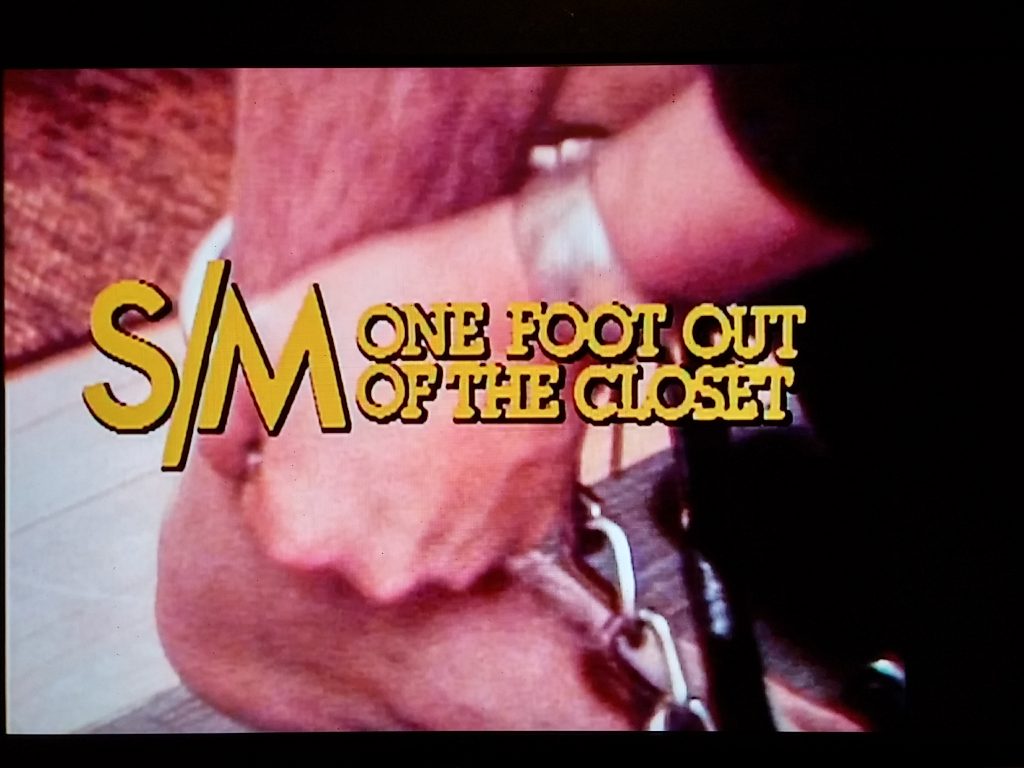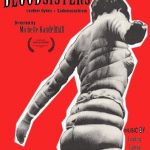For a while, I’ve seen references to a 1980 documentary about kinky people, aired on public television station KQED. Online searches turned up nothing, but I finally put in the effort to look up KQED and see if I could somehow get access to it, if only partially. After a few emails, they were kind enough to give me access to a stream of the 36-year-old documentary. I had to sign a fairly restrictive agreement, so I can’t share any of it.
This was 1980. Organizations like the Til Eulenspiegel Society, Society of Janus and Samois were less than 10 years old. GMSMA hadn’t been founded yet. Books like Leatherfolk and Different Loving were far in the future. According to the DSM, kinky people were mentally ill. The same year, the film Cruising depicted leatherman culture as a hellish underworld. So, a documentary about kinky people, and broadcast on public television at that, was pretty remarkable for the time. I’m amazed they managed to find that many people who were willing to go on camera. (Many of them changed their names and/or had their faces obscured, as expected.)
Hosted by Phil Bronstein, the documentary starts with images from fashion photography and lyrics from popular music, indicating sadomasochism’s presence in mainstream popular culture. This goes deeper into the subculture of sadomasochists. The filmmakers interviewed straight, gay and lesbian people about their kink lives. Most of them stress their consensuality and their normality, kink notwithstanding. There’s a brief glimpse of a lesbian couple, one white and a mistress, the other black and a slave who wore a collar. This is the scene discussed by Alice Walker in her essay “A Letter of the Times, or Should This Sado-Masochism Be Saved?” in Against Sadomasochism, which expressed her horror at the idea of a voluntary black slave.
Imagine our surprise, therefore, when many of us watched a television special on sado-masochism that aired the night before our class ended, and the only interracial couple in it, lesbians, presented themselves as mistress and slave. The white woman, who did all the talking, was mistress (wearing a ring in the shape of a key that she said fit the lock on the chain around the black woman’s neck), and the black woman, who stood smiling and silent, was– the white woman said– her slave. [Pg.207]
I’m 90% certain that this was a young Viola “Mama Vi” Johnson (See addendum)
This documentary is also pre-AIDS, and gives us a look into the lost golden age of leatherman culture and the bars and clubs. Apparently, some straight couples would go into gay leather bars, as one of the few places they could go to be publicly kinky.
There’s also a trip to The Chateau, a private SM club run by Jim “Sir James” Hillier, and the Backdrop Club, perhaps better known. That leads to the pro-domme scene, women who largely work out of their home. We get to see a couple of scenes in great detail (one M/m, one F/m), with the dominants talking about their psychology and techniques, as well as the tenderness between the two.
Bronstein the narrator is pretty even handed, emphasizing that for most kinksters, roles don’t apply outside the scene. However, every subculture has its fringe. There’s a sequence at a farm outside San Francisco owned by a guy who claims that he owns his girlfriend, and says he “almost” bought a slave for $1,000. He says you have to go outside the United States, to places like Japan, where women are looking into the B&D and even S&M worlds for sponsorship into the US. He even claims such a hypothetical woman would be safer with him as a slave than under a marriage contract.
Back in the shallower end of the pool, there’s a good discussion of safety and consent (note the appearance by a young Dr. Charles Moser), balanced out by mentions of a series of murders on Folsom street, and the pervasiveness of SM imagery in other media, including the new thing called “Dungeons and Dragons”. Bronstein goes into a mainstream bookstore and reads from one of the Gor series of novels. There’s a feminist critique of BDSM from a sociologist, and the familiar back-and-forth on the political and psychological merits of BDSM. At this point in time, gay leather was prominent enough that there was a San Francisco city official who did educational lectures in leather bars on BDSM safety. (Again, this was pre-AIDS.)
The documentary draws no particular conclusion or thesis about BDSM, other than it is here to stay. Of the couples and play partnerings depicted, it’s the gay male couple who come across the best, showing both passion and intimacy in their play. Then again, they may have been the only ones who were willing to be filmed in play.
Hopefully, some day KQED will make this accessible to a wider audience. It’s a remarkable document of the early days of the Scene.
Addendum: I showed a still of the lesbian couple to Vi Johnson at the 2016 Master/slave conference. She said it wasn’t her, and she couldn’t identify the women either.





I first saw this video when it first came out in 1978. I knew I was kinky, but this video took a lot of the stigma from it for me. I joined the Society of Janus in 1980, and by 1982 I knew everyone who appeared in the video.
I’m trying to find a copy to be able to send it to the Carter/Johnson Library.
[…] Alice Walker, author of The Color Purple, eloquently conveys her dismay at an interracial lesbian master-slave couple seen on a TV documentary. […]